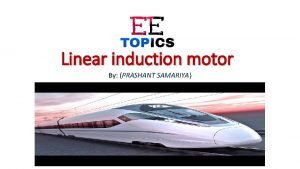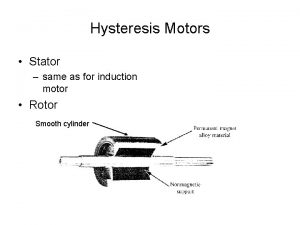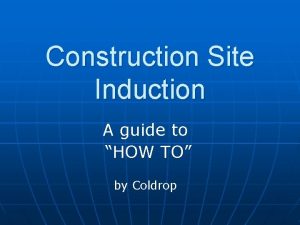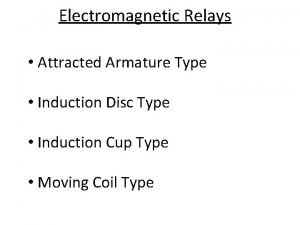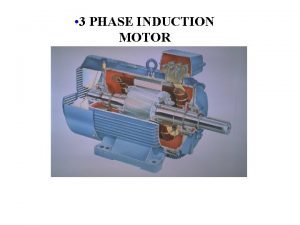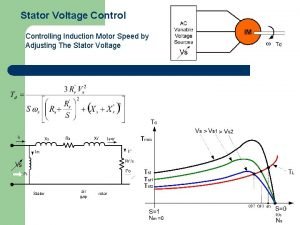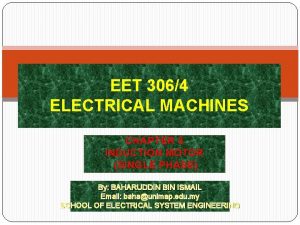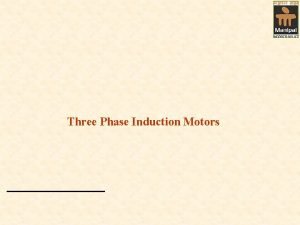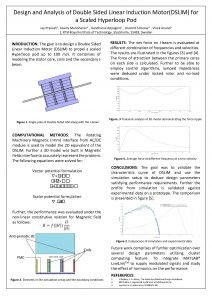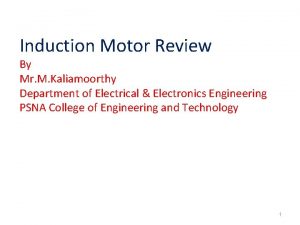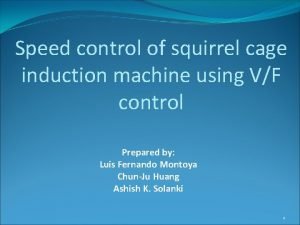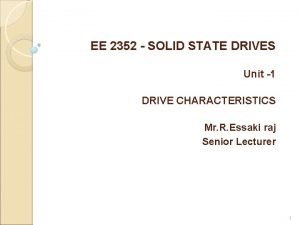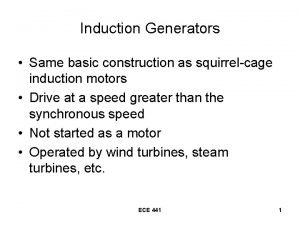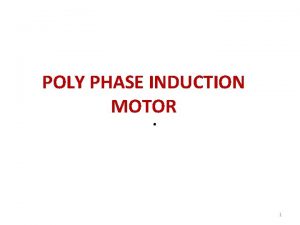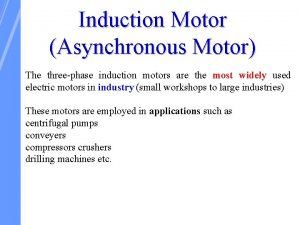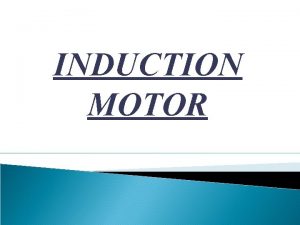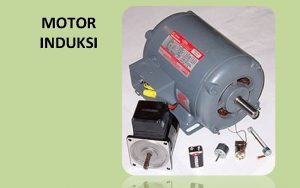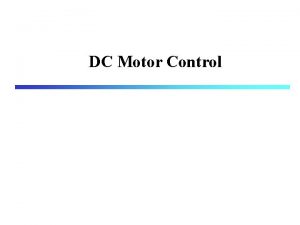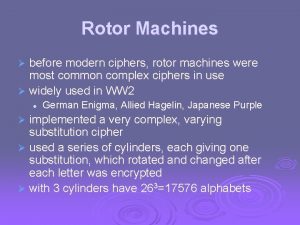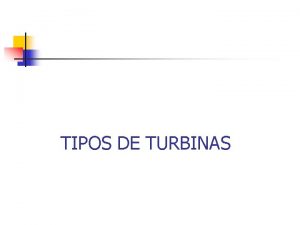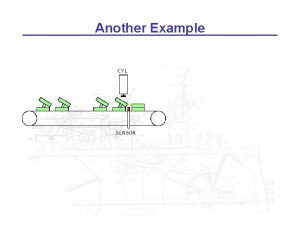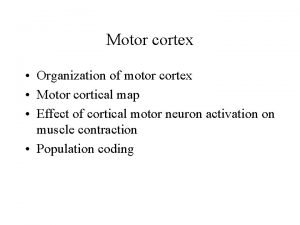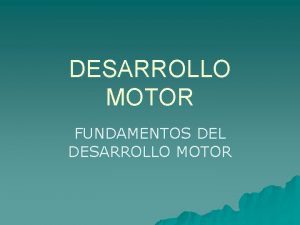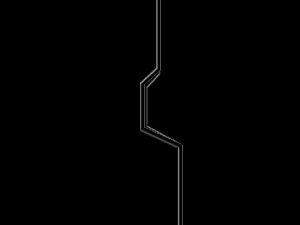Induction Motor Construction SquirrelCage Rotor Another SquirrelCage Rotor















- Slides: 15

Induction Motor Construction

Squirrel-Cage Rotor

Another Squirrel-Cage Rotor

Wound-Rotor

Stator Coils for a 2 -pole 3 - induction motor Connection diagram

Stator Coils for a 2 -pole 3 - induction motor

Coil Span and distance between center lines Coil Span = Stator circumference / # of stator poles Distance between center lines = 120 / # of pole pairs For a 2 -pole machine, Coil Span = 360 /2 = 180 Center line distance = 120

Coil Span and distance between center lines Coil Span = Stator circumference / # of stator poles Distance between center lines = 120 / # of pole pairs For a 4 -pole machine, Coil Span = 360 /4 = 90 Center line distance = 60

Synchronous Speed • ns = synchronous speed (r/min) – the speed of the rotating magnetic flux • ns = fs/(P /2) (r/s) – where • fs = frequency of the 3 - supply • ns = synchronous speed • P = number of poles formed by the stator winding • ns = 120(fs)/P (r/min)

Slip • • ns = synchronous speed of the rotating flux nr = speed of the rotor slip speed = ns-nr slip = s = (ns-nr) / ns = per-unit slip % slip = s x 100% solving for nr , nr = ns(1 -s)

Effect of slip on rotor frequency • frequency of the voltage induced in the rotor, fr • fr = Pn/120, where – P = the number of stator poles – n = the slip speed (r/min) – fr = rotor frequency (Hz) = P(ns – nr)/120 – fr = P(sns)/120 = s(Pns/120) = proportional to s!

“Blocked rotor” condition (nr=0) • s = (ns–nr)/ns = (ns-0)/ns = 1 • fr = s(Pns/120) = Pns/120 = same as source • fr = f. BR = fstator • In general, fr = sf. BR

Effect of slip on rotor voltage • For a squirrel-cage rotor, – >Er = 4. 44 Nfr max = 4. 44 Nsf. BR max • at blocked rotor, s=1 – >EBR = 4. 44 Nf. BR max => Er = s. EBR

Consequent-Pole Motor 4 -pole machine 8 -pole machine

Winding Connections Switch “up”, coils 1 & 3 have opposite polarity to coils 2 & 4. Looks like a 4 -pole machine. (Fast) Switch “down”, all coils have the same polarity. Looks like an 8 -pole machine. (Slow)
 Construction of linear induction motor
Construction of linear induction motor Rotor of hysteresis motor
Rotor of hysteresis motor Construction site induction
Construction site induction Induction disc type relay pdf
Induction disc type relay pdf Ac voltage controller output voltage formula
Ac voltage controller output voltage formula 3-phase induction motor problems and solutions
3-phase induction motor problems and solutions Power flow diagram of an induction motor
Power flow diagram of an induction motor Application of induction motor
Application of induction motor Stator voltage control of 3 phase induction motor
Stator voltage control of 3 phase induction motor Air gap power in induction motor formula
Air gap power in induction motor formula Power stages in 3 phase induction motor
Power stages in 3 phase induction motor Linear induction motor hyperloop
Linear induction motor hyperloop Induction motor voltage equation
Induction motor voltage equation Speed control of squirrel cage induction motor
Speed control of squirrel cage induction motor Repulsion start induction run motor
Repulsion start induction run motor 4 quadrant operation of induction motor
4 quadrant operation of induction motor
